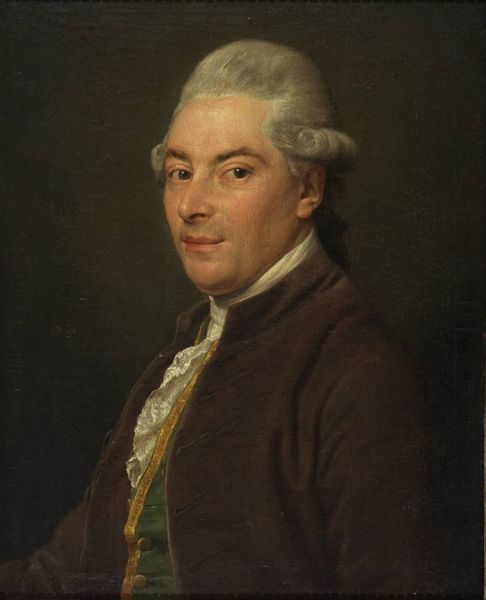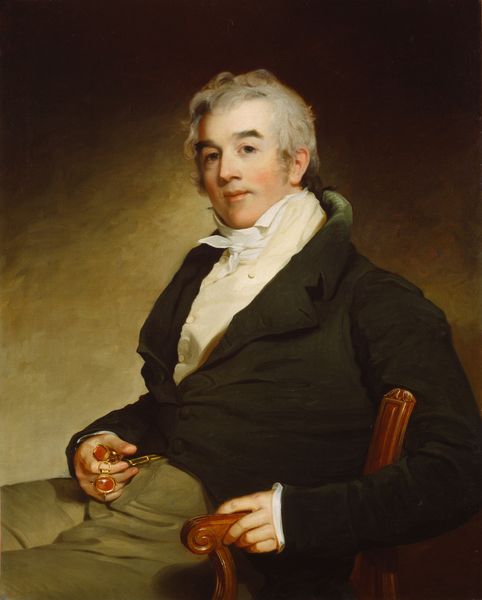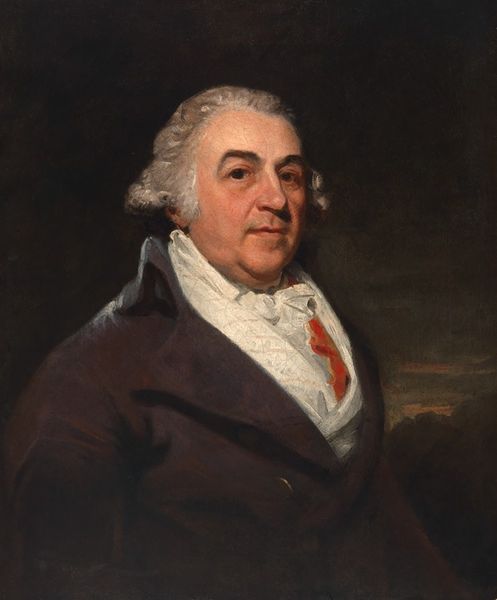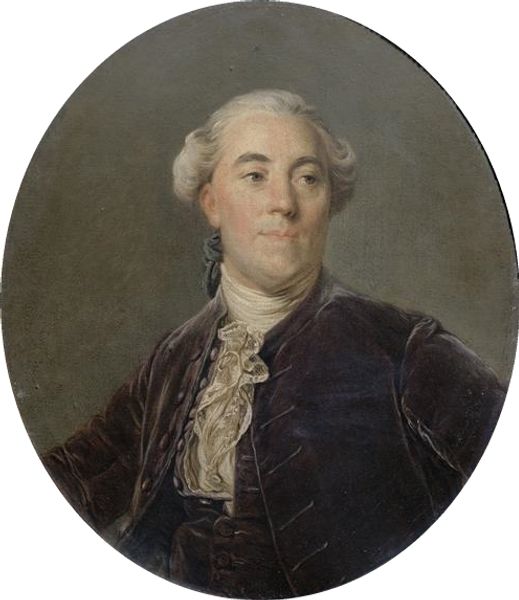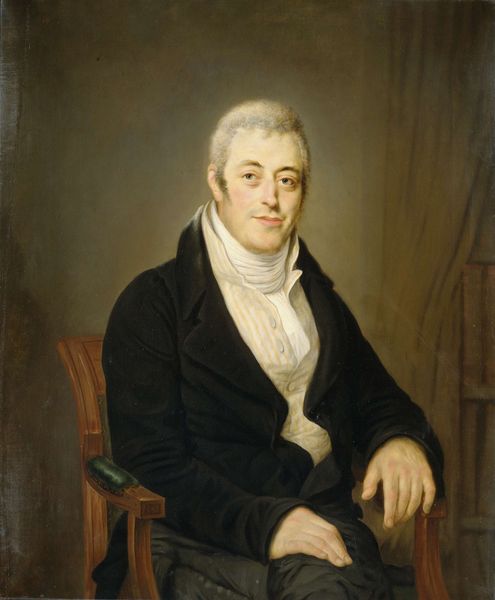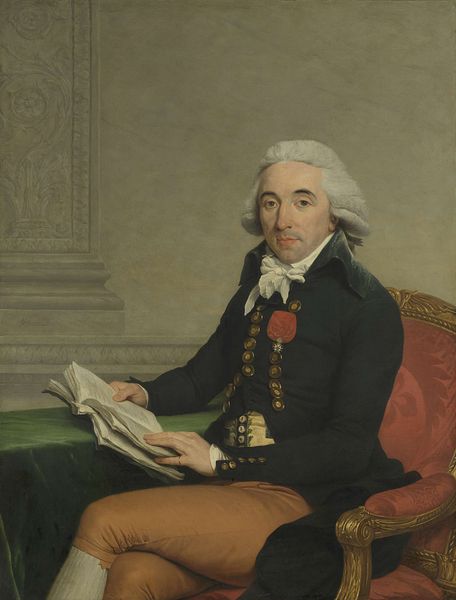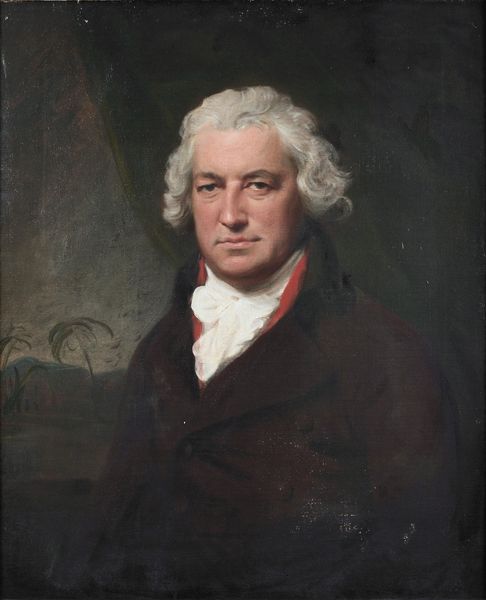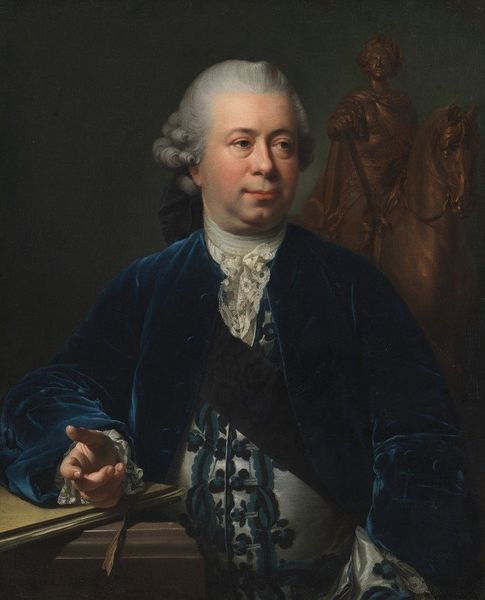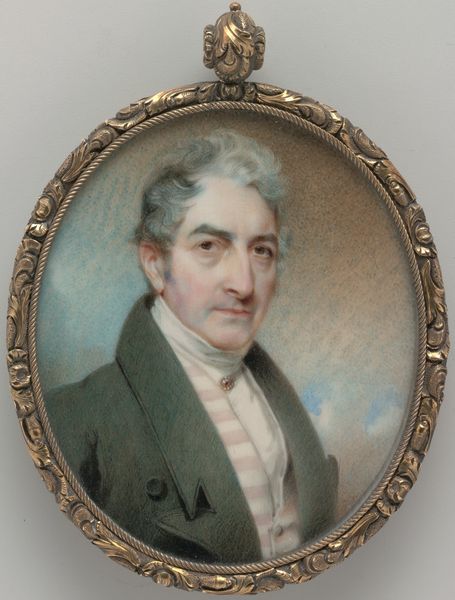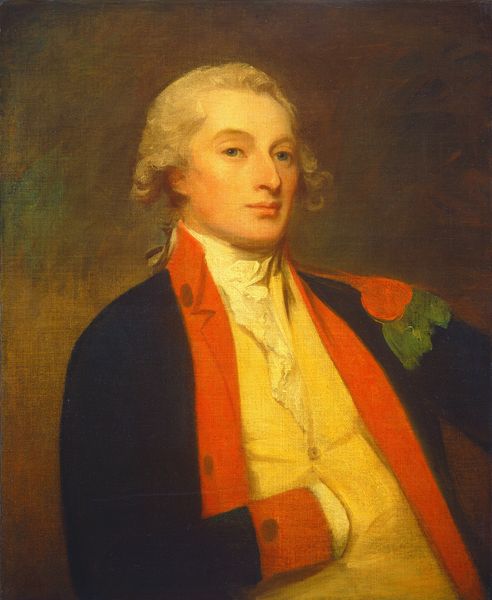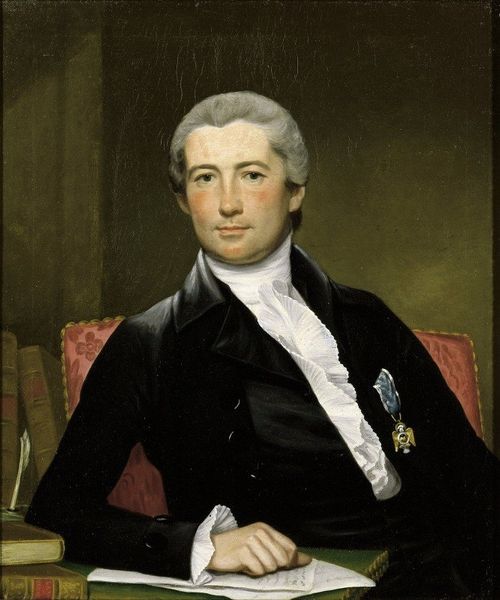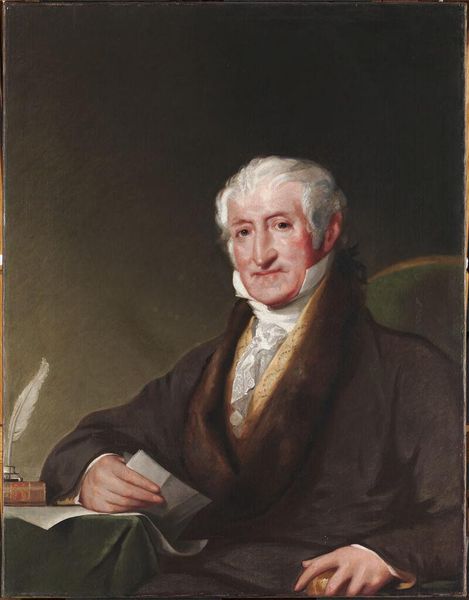
painting, oil-paint
#
portrait
#
painting
#
oil-paint
#
romanticism
#
realism
Dimensions: 64 x 87 cm
Copyright: Public domain
Curator: Ah, the 'Portrait of David C. de Forest,' painted in 1823 by Samuel Morse, best known to us today for his, shall we say, energetic role in the telegraph and the language it spawned. This artwork is currently housed in the Museo Nacional de Bellas Artes in Buenos Aires. Editor: My first impression? It’s incredibly… contained. Almost severe. The dark coat against that subtly gradated brown background creates such a close, almost claustrophobic space around him. There's such an intensity here, held very, very carefully. Curator: Morse painted de Forest in Cadiz, Spain, where de Forest was serving as a U.S. consul. Think of the backdrop against which this portrait was made. It offers insight to diplomatic dynamics and growing relationships between the United States and burgeoning independent South American countries during the early 19th century. Morse's realism blends beautifully with Romanticism. Editor: Absolutely. That carefully depicted face! It draws you in. The Romantic element, I think, comes not from overt displays of emotion, but in the implicit tension, the sense of a powerful story just beneath the surface. Those letters he holds – official correspondence, I presume? – what secrets are contained there? It also occurs to me... Morse also used oil paints, this must be really aged. Curator: Most definitely. They are likely dispatches. The letters suggest not only his diplomatic role, but also hint at the weight of decisions and information he carries. These representations served to enhance diplomatic figures while also implying what would have been thought of his daily tasks and duties. Editor: It’s fascinating how such a seemingly straightforward portrait becomes a window into a complex historical and personal narrative. De Forest appears every bit the serious statesman, but you feel there’s something more going on inside. Did Morse capture the public persona and some glimmer of the private man? Curator: That's precisely what makes it so compelling, isn't it? Morse, grappling with the intricacies of paint in 1823, gives us, today, more than a likeness of diplomat; but provides access into those turbulent decades between old empires and future networks of trade, politics and yes, even communication. Editor: And Morse, inadvertently or not, memorializes this figure's presence to us. Now it stands at the heart of international narratives and gives insight to new and interesting contexts that history preserves to this day.
Comments
No comments
Be the first to comment and join the conversation on the ultimate creative platform.
